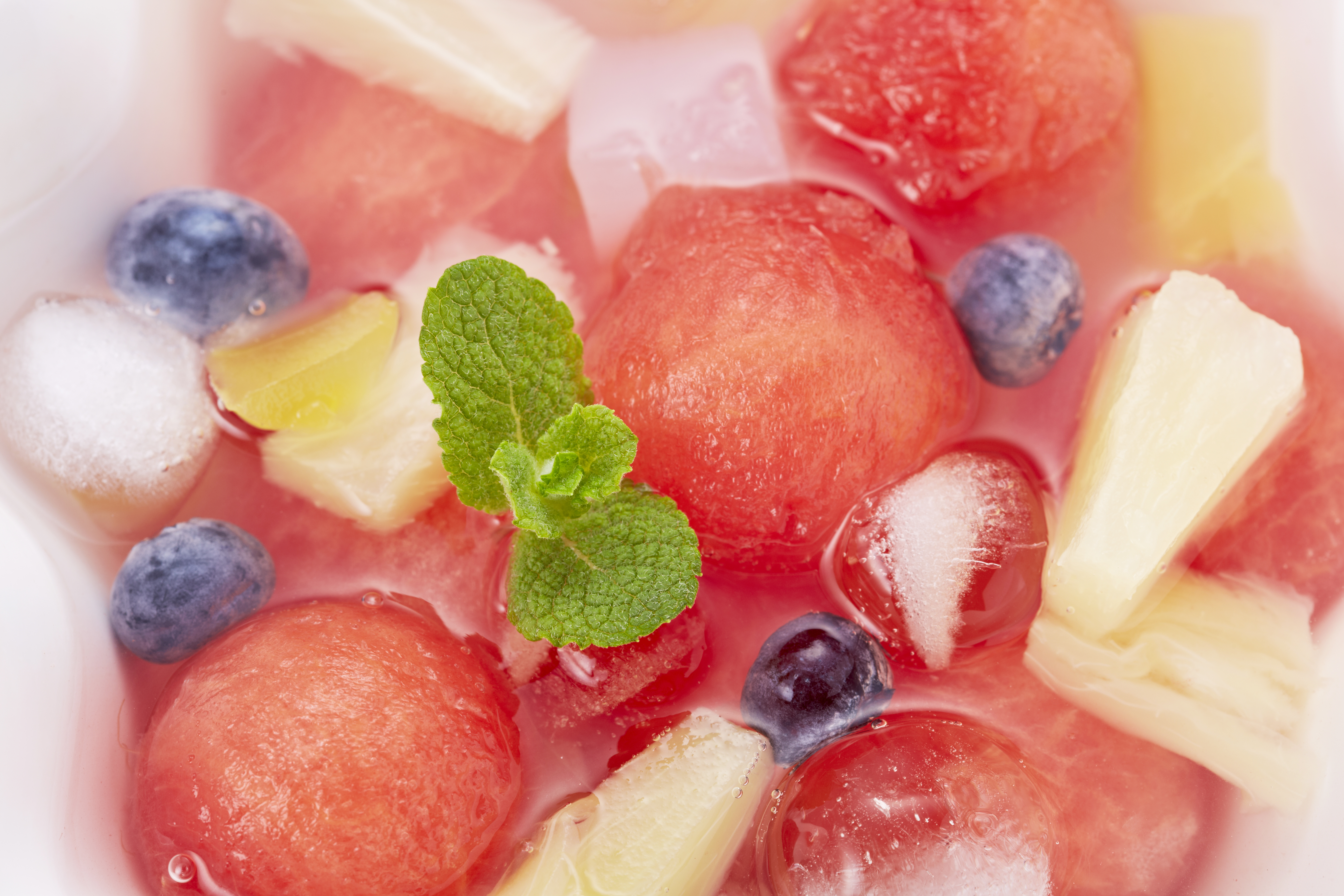Beat the Heat with Hwachae
Written by Cho Namhee
The season of blazing sun and scorching heat is just around the corner. As the summers seem to be getting more intense every year, the importance of staying hydrated cannot be overemphasized. There is a myriad of cold beverages available to quench your thirst; however, modern drinks are far less health-friendly than Korea’s traditional thirst-quenchers. Hwachae, or traditional Korean punches made with fruit or edible flower petals, were a common type of cocktail consumed during spring and summertime in the past. Given the popularity of traditional drinks served hot in Korea, it is surprising to learn that there are so many traditional cold beverages.
Though the traditional fruit punches, often served as desserts, are easy to make and come in quite a large variety, they are not commonly served in cafés and restaurants anymore unless they are served as items on Korean table d’hôte menus. Sweet rice drink (sikhye) or cinnamon punch (sujeonggwa) may be considered more typical traditional drinks. But to be specific, they were drinks served to guests during the first month of the lunar calendar and on Korean Thanksgiving Day (Chuseok). In other words, they were not served primarily to quench people’s thirst. Hwachae, on the other hand, were made as spring and summer delicacies so that people could appreciate the art of using different seasonal ingredients depending on the time of year.
Not only are the petals and fruits placed in honeyed water, they are often garnished on top as well. These garnishes are coated with dried starch and blanched, then rinsed in cold water. The decoration enhances the feeling of the season and also prevents drinkers from having an upset stomach.
In summer, watermelon makes for the best hwachae. In the past, watermelons were dunked into wells to make them cool. Then, they were juiced and mixed with honey and water. Often the red watermelon is scooped out of its shell, and then placed back in to float with honey water and ice. Peaches, citrons, and strawberries were also used for fruit punches. However, among the fruits, omija (magnolia berry) was known for having five flavors (sweetness, sourness, bitterness, saltiness, and spiciness) all rolled into one and was often served as the base ingredient of traditional Korean punches. These berries are fully ripe in June and July and their sweet-and-sour taste intensifies the flavors of the fruits that are mixed in or put on top as garnish. Ultimately the intense sweetness and sourness make it just right to quench your thirst.
It is said that there are 30 different recipes for hwachae. Regardless of the other ingredients you may add to the drink, the honeyed water with slices of seasonal fruit are the key. If you get tired of drinks made with artificial coloring and artificial flavoring, do it yourself. Make your own heat antidote for the upcoming sweltering days of summer.
The Author
Cho Namhee, an over-zealous sports fan, is a free spirit who calls Gwangju “home”. He studies communications at Chonnam National University and works for the 18th FINA World Championships, Gwangju 2019.







